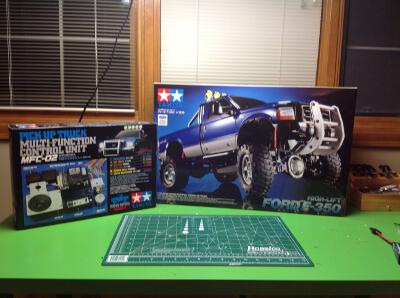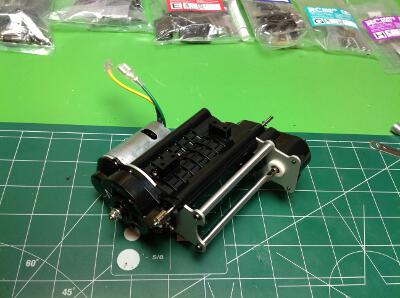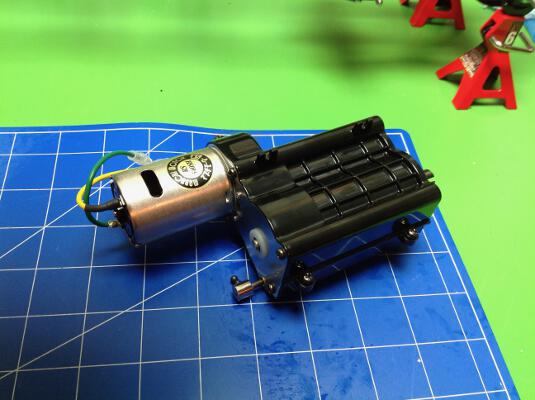At this point I'd like to compare the Highlift
transmission to the 3 speed transmission from the King Hauler and other
1/14 scale tractor trucks. They are actually almost the
same. All of the internal gears on Shafts A and B are the
same. The obvious difference between the Highlift on the left and
the King Hauler on the right is the position of the motor. A side
effect of this is that the Highlift spur gear is outside the gearbox and
the King Hauler spur is inside. The Highlift also adds the
transfer case. The shift mechanism is the same. This is NOT
the same transmission used in the Bruiser which is considerably more
complicated and includes a 2WD-4WD selector and a planetary set.
Let's derive the final ratios using what we know. Don't forget the differentials which use a 40:15 ratio.
- (motor)*(xmsn)*(t-case1)*(t-case2)*(diff)
- 1st - 54:16 * 44:13 * 25:16 * 23:17 * 40:15 = 64.4:1
- 2nd - 54:16 * 37:20 * 25:16 * 23:17 * 40:15 = 35.2:1
- 3rd - 54:16 * 30:27 * 25:16 * 23:17 * 40:15 = 21.1:1
It even matches what it says on the box!


